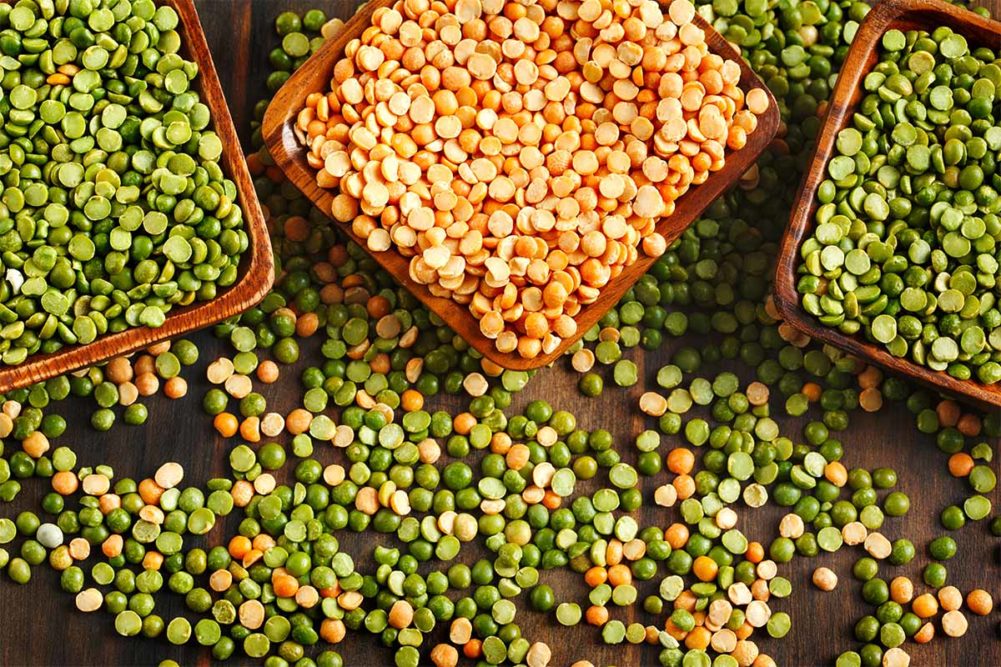ATLANTA — Does the inclusion of pulse-based ingredients in dog food affect canine cardiac health? Pawan Singh, graduate student at the University of Guelph in Ontario, Canada, addressed this hot-button topic in her presentation at the American Feed Industry Association’s (AFIA) Pet Food Conference on Jan. 25, held in conjunction with International Production & Processing Expo (IPPE) in Atlanta, Ga.
Singh was one of three graduate students selected by AFIA to share her research during the annual conference. She is under the supervision of Kate Shoveller, Ph.D., animal nutritionist at Guelph’s Ontario Agricultural College. The study was supported by Champion Petfoods.
 Pawan Singh, who is pursuing her master’s degree in companion animal nutrition at the University of Guelph, studies grain-free diets and pulse inclusions in pet food formulations. (Source: University of Guelph)
Pawan Singh, who is pursuing her master’s degree in companion animal nutrition at the University of Guelph, studies grain-free diets and pulse inclusions in pet food formulations. (Source: University of Guelph)
Pulse-inclusive dog food and its effect on cardiac health
Singh’s study looked at long-term feeding effects of grain-free dog foods, particularly those with up to 45% pulse inclusion, and diet’s effect on canine cardiac health. The interest in grain-free diets and pulse ingredients stems from consumer interest and a regulatory debacle with the US Food and Drug Administration.
“…Unlike most animal proteins, though, plants do not contain taurine, and pulses are heat treated to reduce anti-nutritional factors and improve palatability, digestibility and bioavailability of nutrients,” Singh said. “In recent years, there has been speculation between grain-free or pulse-inclusive diets, specifically those containing field peas and lentils, contributing to the development of nutritionally mediated canine dilated cardiomyopathy, or DCM, which is a potentially fatal heart disease.”
Singh’s study included 28 Siberian Huskies between the ages of 1 and 10, including 13 females and 15 males. Four groups were formed based on echocardiographic ejection fraction age, weight and sex. Experimental diets used in the study were formulated by Champion Petfoods and contained either 0%, 15%, 30% or 45% pulse-inclusion rates. These diets were fed to their respective groups for five months. The dogs were weighed weekly and fed based on body weight baselines, and received echocardiographic assessments at the beginning and end of the trial to measure any changes.
A recent update on DCM and grain-free dog food
BSM Partners and the University of Missouri analyzed a retrospective survey that evaluated the annual incidence of canine cardiomyopathy (DCM) diagnosed by veterinary cardiologists across the Unites States.
The data reviewed did not indicate a significant increase nationally in DCM incidences from 2000 to 2019 while grain-free pet food store sales grew 500% between 2011 and 2019. Continue reading about this study.
All diets were formulated with the same micro and macro ingredient targets, including 30% crude protein levels and 13% to 15% fat composition.
“All diets had the same ingredient composition, with the exception of the grain-inclusive control diet that used whole corn added at an inclusion level of 33% and no pulse ingredient,” Singh said. “The other three grain-free diets did not include corn, and had either 15%, 30% or 45% inclusion of green and yellow peas, pinto beans, and chickpeas and lentils. All diets included chicken meal as the animal protein source, and every other ingredient was formulated at the same inclusion level.”
Singh said she expected to see an increase in total dietary fiber and oligosaccharides, given the inherent characteristics of pulses, as well as a decrease in starch content. These expectations were observed in the study.
In comparing the baseline echocardiograph results with the final echocardiograph results, the study showed that none of the diets indicated the development of DCM. Additionally, Singh and her team did not observe linear quadratic or cubic trends to suggest the development of DCM, particularly symptoms such as an internal diameter and volume increase of the left ventricle during the two phases of the cardiac cycle: diastole and systole.

“Also, we would have seen a decrease in the ejection fraction and fractional shortening as well as increased the periodicity index, which, once again, we did not observe during this trial,” she said.
The 28 dogs included in the study did not exhibit behavioral changes based on historical behavior patterns. Upon the final echocardiographic assessment, the study confirmed an increase in troponin NT-proBNP, which was a key biomarker to monitor cardiac health throughout the study, but the increase was not a result of cardiac impairment.
In conclusion, Singh stated the data collected during the controlled study confirmed that “pulse ingredients are not a cause of nutritionally mediated DCM, and thus other potential dietary variables should be investigated.”
“To our knowledge, this is the first controlled feeding trial investigating the cardiac implications of up to 45% pulse-inclusive diets that are nutritionally balanced with healthy dogs,” she noted. “The data from this trial was based on assessing the combination of green and yellow peas, pinto beans, chickpeas and lentils on cardiac health, and not all pulse ingredients.”
Continue reading our coverage of AFIA’s 2022 Pet Food Conference.




